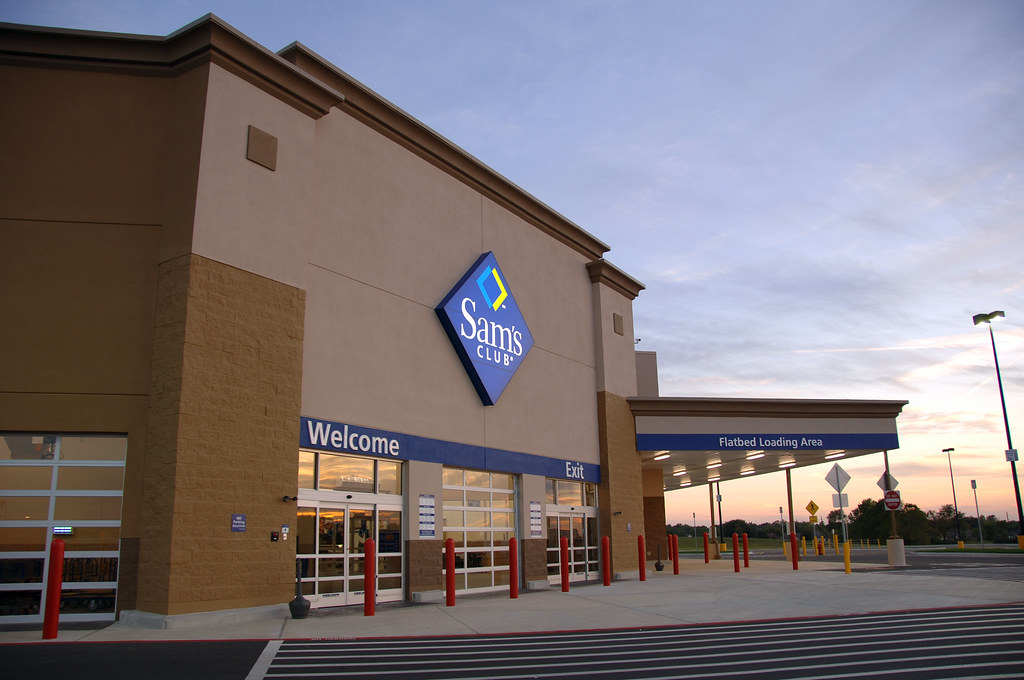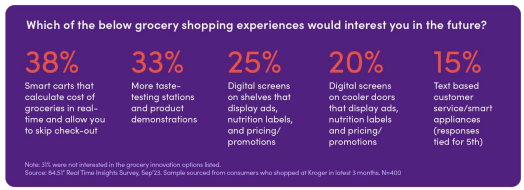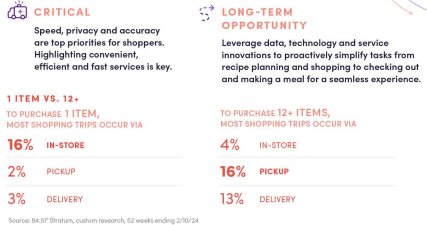In a few short years, retail will be a totally immersive and data-driven experience highlighted by personalized AI recommendations for health and home, smart carts to increase efficiency (and solve the traveling salesman’s dilemma in-store), and much more. Until all these technologies are made manifest, however, the 84.51 team recently released several trends to watch for this summer and beyond (84.51 is Kroger’s retail data science, insights, and media company).
For many, retail shopping will cease to be a chore and start becoming a journey of exploration and discovery as retail transitions from the hunt-and-peck style of yesterday to a data-driven, insights-laden, bespoke experience of tomorrow.
As consumers become more accustomed to convenience and value no matter what they’re buying, retailers and grocers have increased their mobile, digital, and in-store services to keep buyers happy and revenue rolling.
To that end, here are several trends to watch for at a retailer near you.
Nonstop Engagement
Customers not only want to feel welcome – they want to feel catered to, seen, and heard. Whether packed wall to wall with goods and sundry or a layout that stresses space, vivid and accessible remote displays, and enticing aisle-front end caps, knowing where and how to get what consumers need – and making the process enjoyable while doing so – is front-of-mind for many owners and operators.
Based on an 84.51 Real Time Insights Survey, 38% of shoppers are interested in smart carts that calculate the cost of groceries in real time and enable them to skip the checkout line completely. Technology like this is already coming to big-box retailers such as Sam’s Club, though widespread implementation of smart carts has yet to be realized in many American markets.
“We see our smart cart as a friendly shopping companion that assists the shopper throughout the visit at the store,” said Guy Murdoch, CEO of Cust2Mate, a smart cart company, to TFI.
“The cart removes typical points of friction from the shopping process, like waiting in long checkout lines or waiting for store associates for assistance, among others. In addition, our smart cart adds value with the introduction of rich content like personalized offers that are relevant to shoppers, presented with the correct context at the right time and place.”
Many smart cart brands are also modular, meaning entire fleets of carts don’t need to be replaced when retrofitting them with smart technology. Furthermore, “Smart carts serve as a bridge between the physical store and the digital world, providing an omnichannel approach that creates a holistic understanding of shoppers for brick-and-mortar grocers,” Murdoch said.
“Smart carts present physical retailers with the opportunity to replace traditional self-checkout methods (which have proven to be a failure and increase shrinkage) and actually digitize the shopping journey.”
Flexibility in Shopping
Consumers are more critical than ever when it comes to package size, type, volume, value, and more. Data from 84.51 reveals speed and flexibility are key factors in helping consumers where and why to shop, and many are simply looking to have their niche or regional consumption needs met by the retailers near their homes – in other words, the 84.51 study recommends looking for underserved populations whose core needs aren’t being met to build long-term loyalty and trust.
AI and opt-in data can help drive this. Kroger recommends to drill down into the customer journey; examine motivations, preferences, and decision drivers; and to implement in-store sales, promotions, and services to reveal actionable insights.
Substitution of orders or of preferred items is a huge driver for today’s busy consumer. According to 84.51 data, preferred substitution methods are:
- Choosing the substitution myself – 43%
- The same product but in different sizes or packaging – 28%
- Best match (a different but similar product or brand) – 24%
- Same product but in a different flavor – 4%
“In this environment, physical and virtual stores will increasingly play the role of helping shoppers discover new and different items,” said Kandi Arrington, senior vice president of customer development at The Mars Agency, to TFI.
“Stores in the future will use more of their footprint for warehousing, while separating out the front of the store for discovery, demoing and solutions.”
Simplicity and Efficiency
Last (and somewhat counterintuitively to the above), consumers’ shopping habits are increasingly dictated by simplicity and efficiency. Speed, privacy, and accuracy are top priorities, so highlighting those services is key to creating value, fostering loyalty, and driving revenue.
The shift that we are seeing [since the pandemic] is that the way people shop in physical stores has changed; they now expect more from their in-store experiences, as they’ve gotten used to the convenient and flexible options offered by digital platforms,” said David Gottlieb, CRO at Trax Retail, to TFI.
“Consumers want to be able to interact with stores in new ways, including the ability to search, filter and find products in the store the same way they do online.”
Innovations in mobile technology, retail brand software development, and certainly AI can help consumers simplify everything from meal planning to finding new and nutritious foods and beverages to support their whirlwind lifestyles, and the more seamless the retail experience can be, the more it will be seen as an opportunity of discovery instead of simply being a chore to load the car with stuff.
To see the entire 84.51 infographic about 2024 retail trends, click here.














